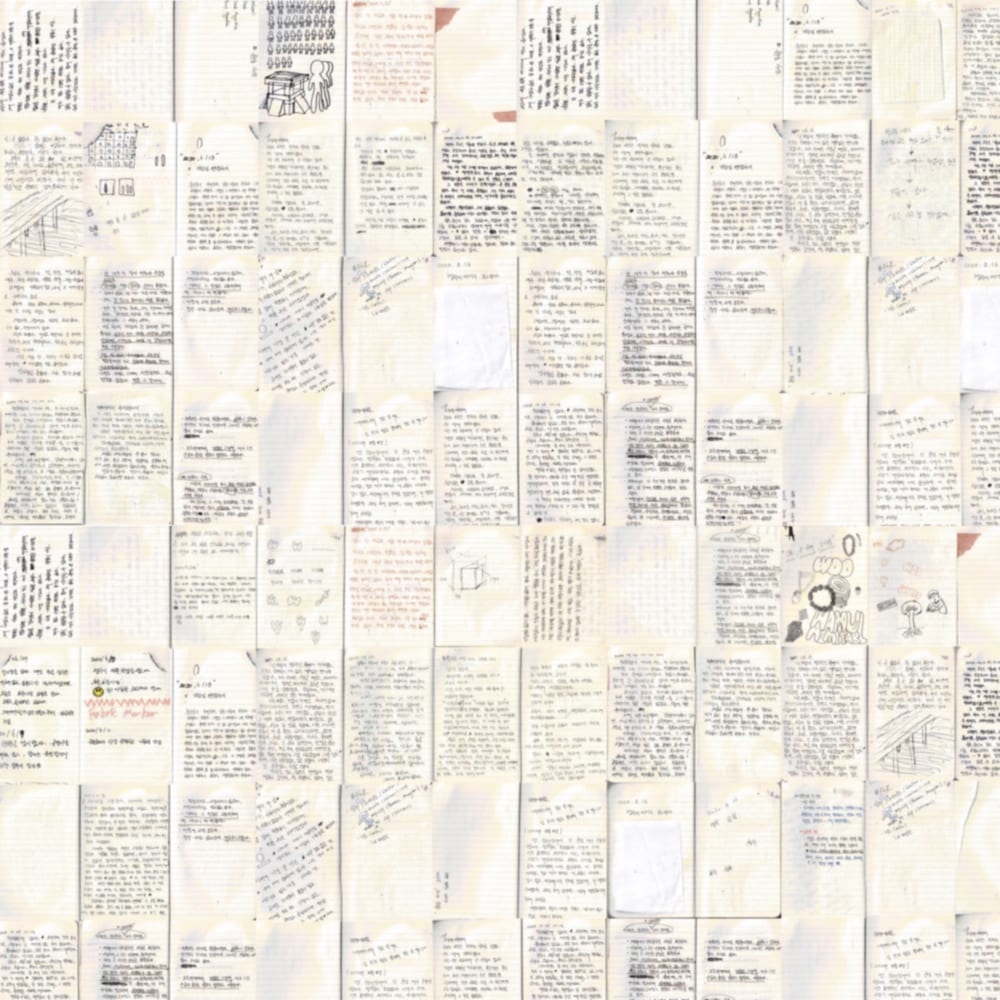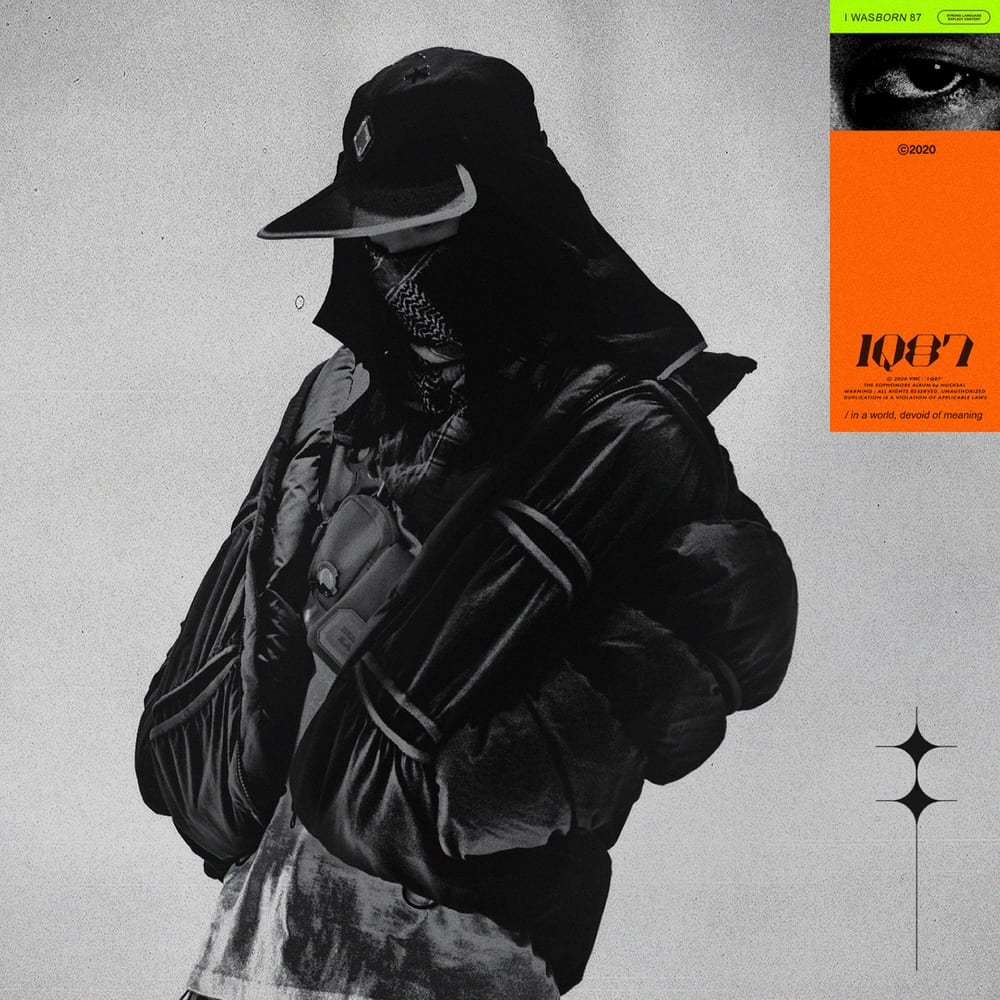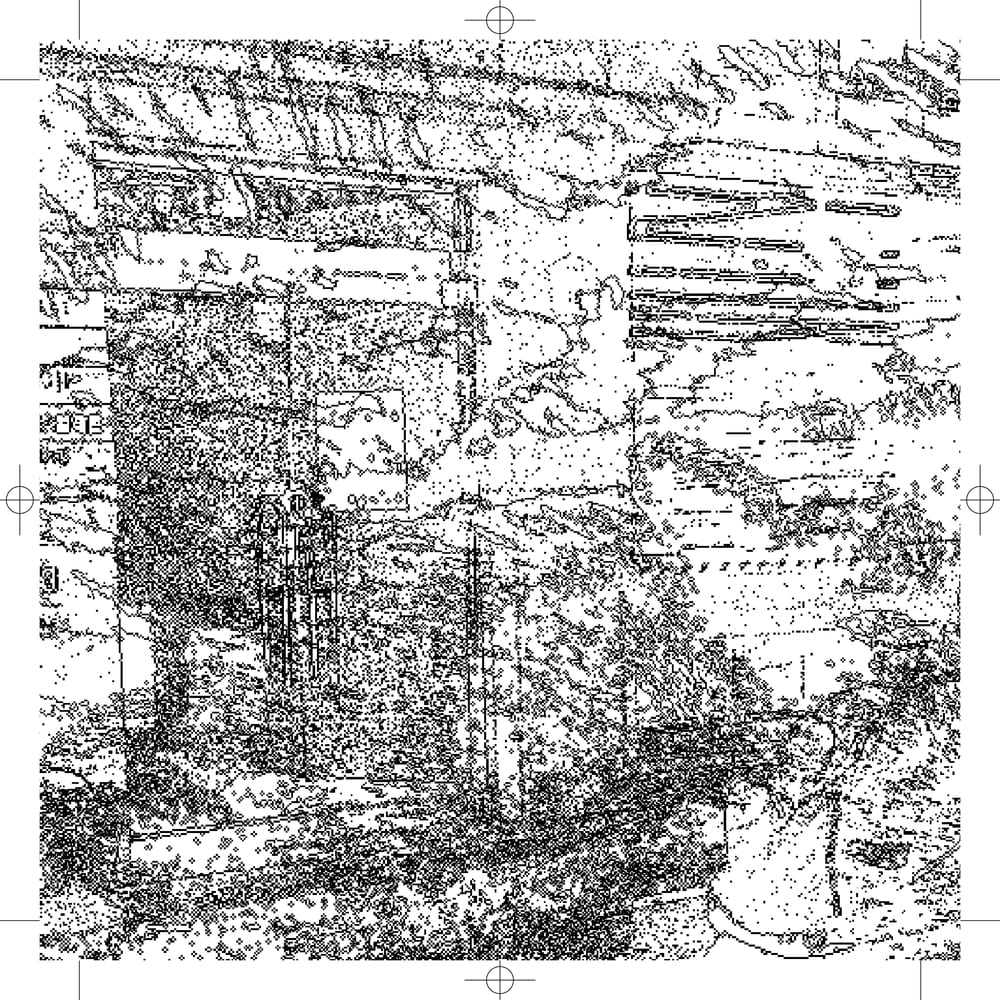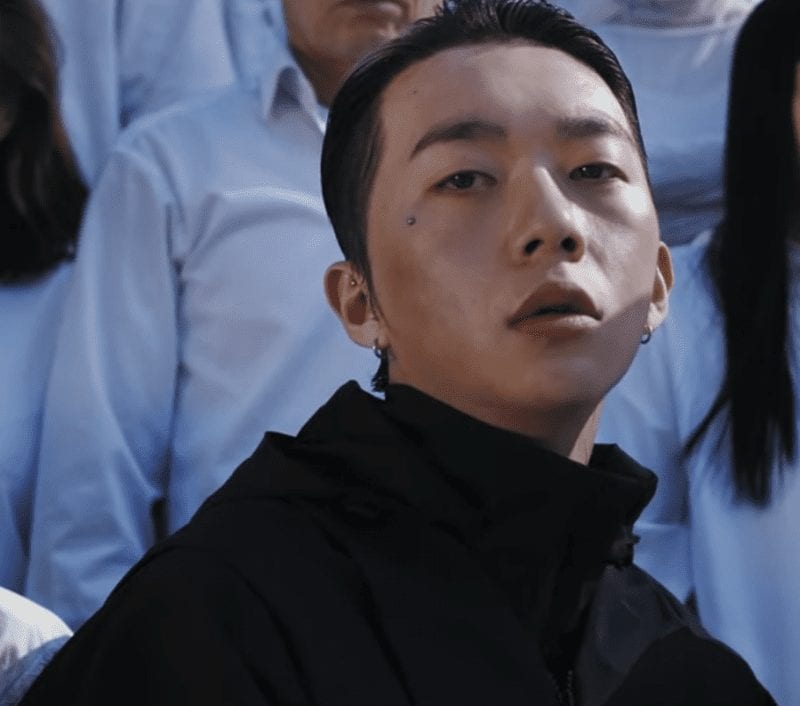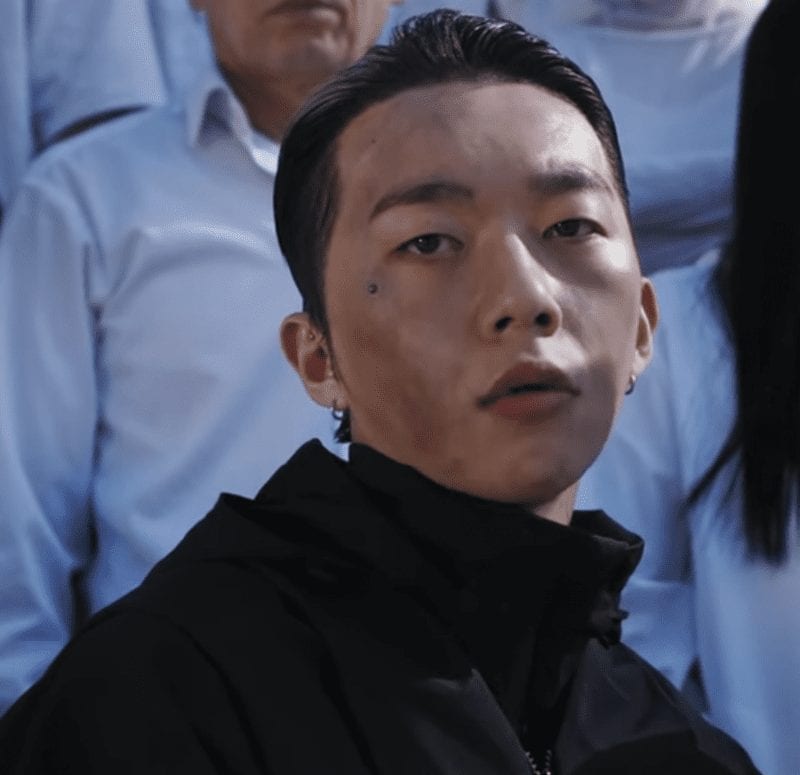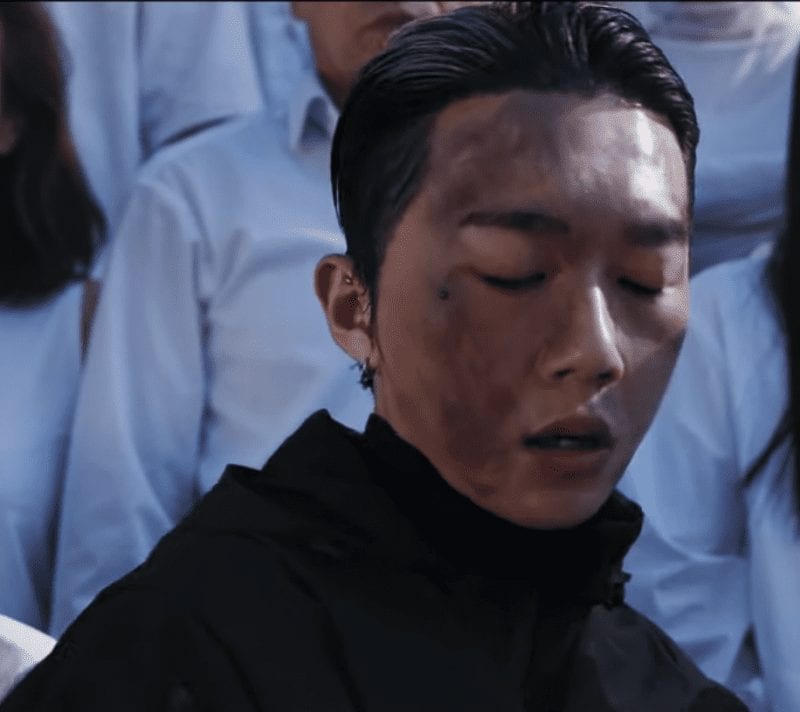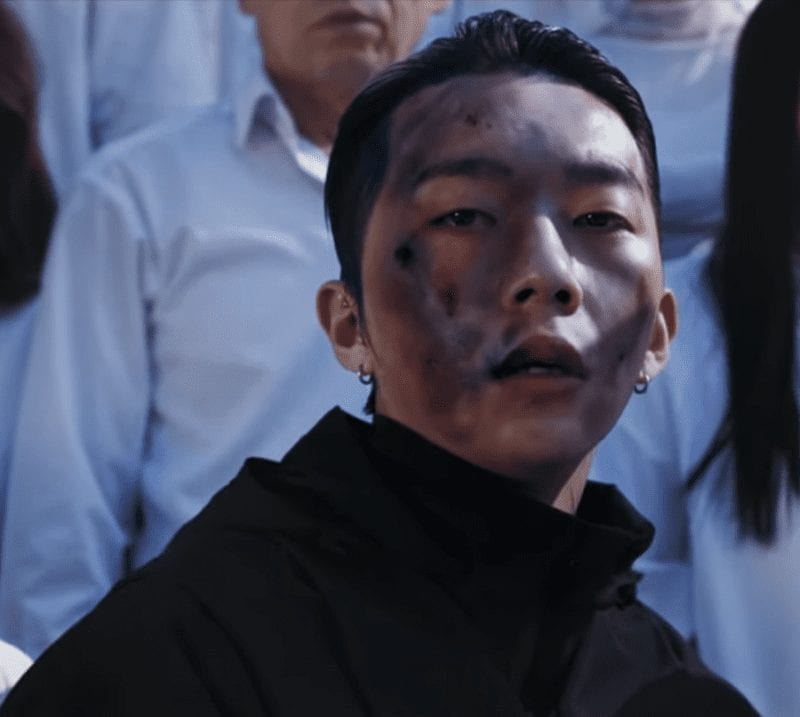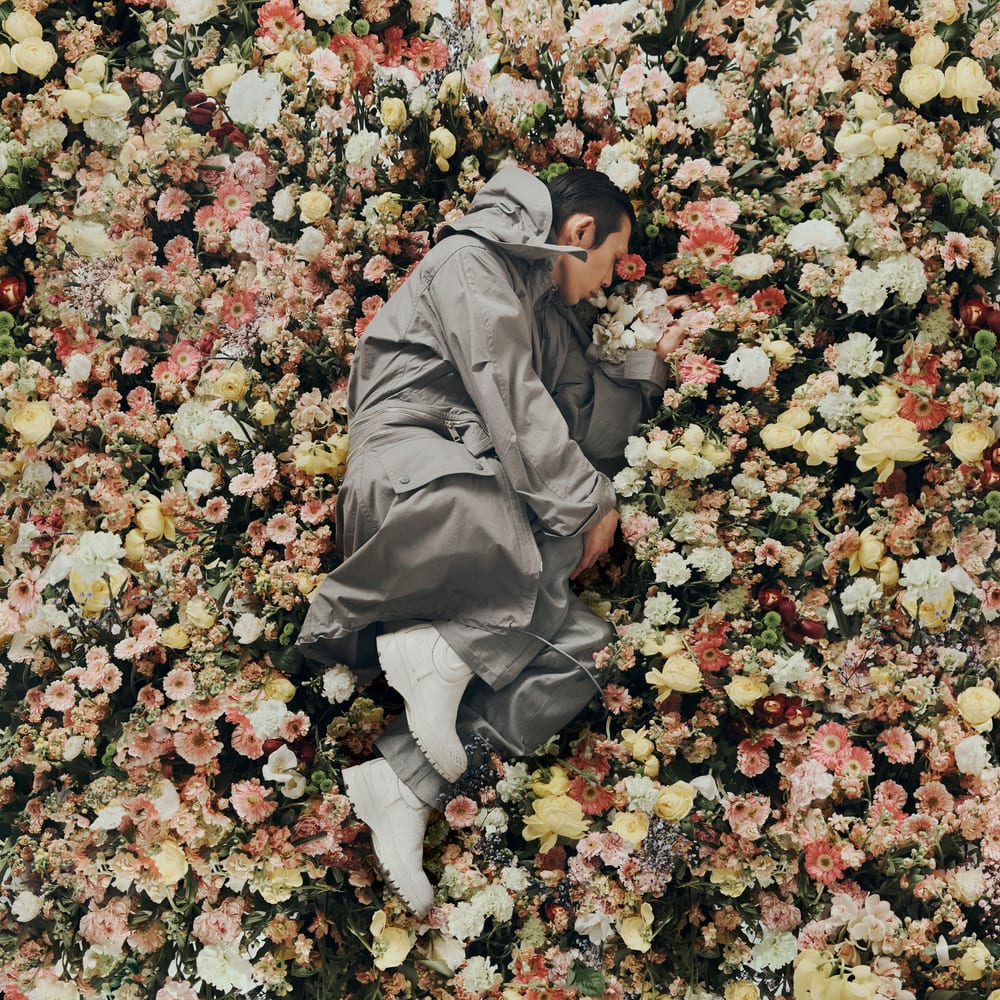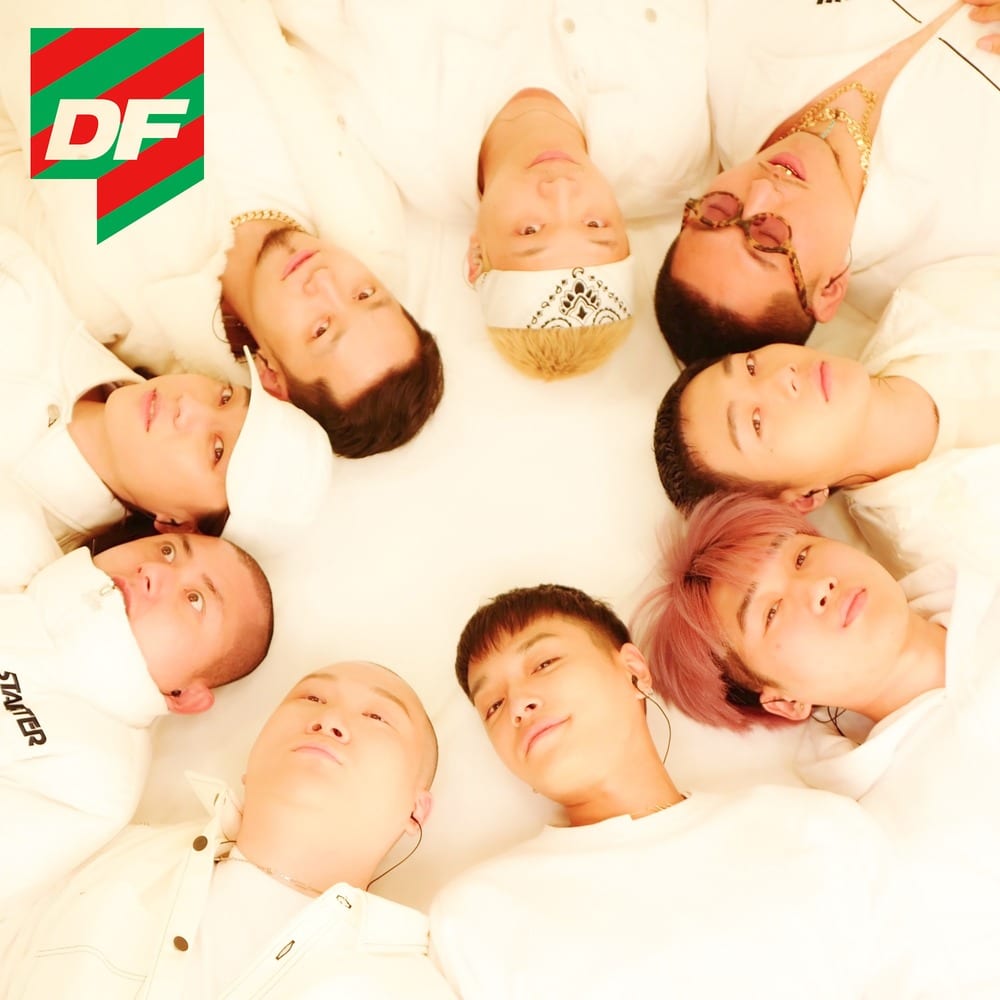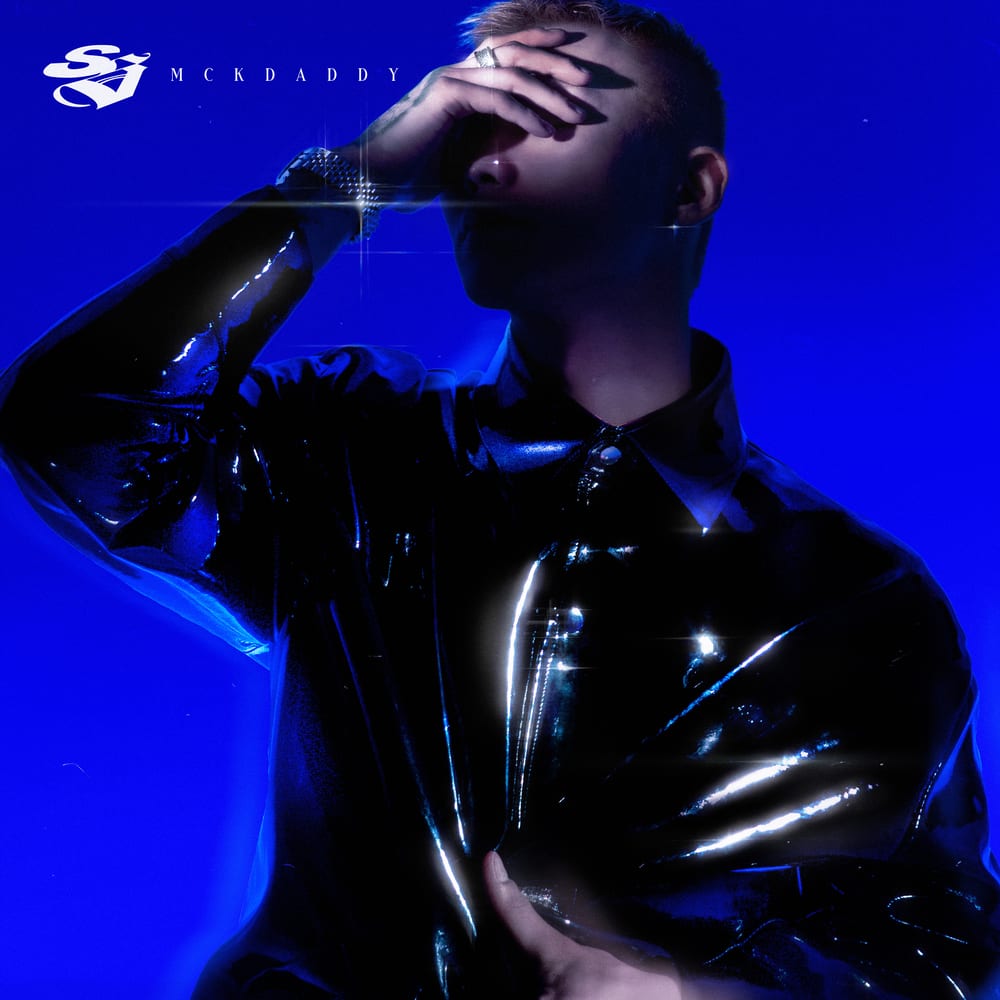AOMG‘s DJ Wegun and Jay Park just dropped their joint EP, “Everybody Sucks“, and the music video of its title track, “Twist the Plot (Feat. Kim Ximya)“.
Woo returns with digital single “Zip”
Following the release of his “BLACK OUT” LP, AOMG‘s Woo is back with a new digital single. “Zip” was composed by KHYO and Mokyo.
Nucksal drops “1Q87” LP & “BAD TRIP + AKIRA (Feat. Gaeko)” MV
VMC’s Nucksal has just dropped his second LP, “1Q87”, and the music video for two of its title tracks, “BAD TRIP + AKIRA (Feat. Gaeko)”.
“USED TO” Reveals Woo Wonjae’s Truth (and Possibly More)
Rapper Wonjae Woo, now known as simply Woo, has a reputation as one of Korea’s most unapologetic rappers. He speaks his truth regardless of what people think. His music always has a sort of eerie slant to it. His latest single “USED TO” is no exception. In it he reveals the truth about his past and flings it back in the faces of his detractors. Naysayers and gossipers who don’t care about how he got where he is now.
That being said, the music video has already sparked a great deal of conversation. The hidden meaning in all the imagery has many fans digging and speculating. It was only a matter of time before I got my hands on it. Keep in mind, this is just my take on the visual aspect of “USED TO.” I come from a generation where the music video and the lyrical content don’t always go hand in hand. (That is, the lyrics tell one story, and the video tells another.)
“You don’t know why I used to…”
Musically, the song is heavily reminiscent of much of Odd Future’s production style. Particularly Tyler the Creator’s album series beginning with 2011’s “Goblin” and ending, arguably, with 2017’s “Flower Boy.” Eerie. Creeping. A slithering, sliding serpent of a thing that twines around your backbone and scratches. There’s an ache in this music. An itch that’s bone-deep and full of hurt.
Tyler used much of that series to exorcise some deep demons. To deal with his own feelings of abandonment and isolation. “USED TO” lyrically emphasizes Wonjae’s dependence on himself. How he came from poverty (working the railyards, saving his cigarette money). From obscurity (hopping on stages and features with wannabes and posers just for some recognition). How he fought through his cigarette and alcohol addictions. Clung to each day because he had such a need for music.
He parallels that isolation with the isolation of his newfound fame (thanks in no small part to his participation on Show Me The Money, and his subsequent signing to Jay Park’s AOMG label). Slander in internet comments. Smear campaigns against his mother. He proclaims, “You don’t know why I used to.” Not so much a challenge. Rather a heavy indictment of those who gorge themselves on gossip and click bait. Never considering the source or the people involved. Wonjae has had enough!
A Perfect Picture
However, I believe the visuals for “USED TO” tells a deeper story. The video opens zooming into what looks like a snapshot set on a mantle. It begins in black-and-white. A still shot of a singular moment. Then as the music begins in earnest, the picture comes to life in muted colors. We’re then thrust into the scene.
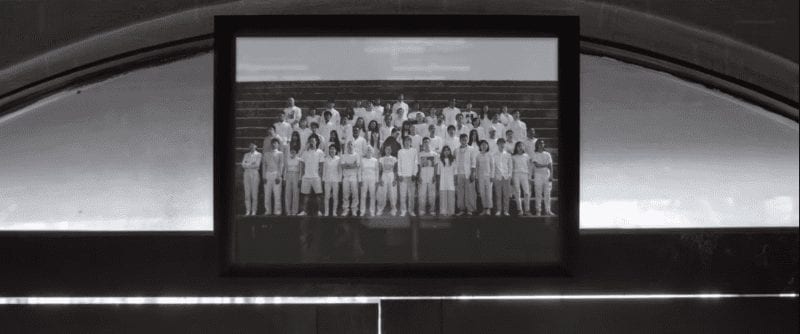
Our protagonist gives an almost resigned performance of the song. As if he’s accepted the inevitability of his life. His circumstances. He’s the only one wearing black in a sea of white. Of people who are mostly older than him (if not around the same age). People who stare blank-faced, complicit, silent. Save for one gentleman on the far left of the screen. He shakes his head, eyes closed, mouth moving mumbling something. You could probably surmise from the cadence of his movements that he’s just in the moment. He forgot he needed to stand still. So overcome by the song itself he couldn’t help but move. (As the man in question is rapper SIMO, that’s most likely the case.)
But I have another theory. More on that later. As Woo continues to perform, a low rumble among so much quiet, he goes through a transformation. It’s subtle at first. A small mark on his face. It almost looks like a dermal piercing until the mark begins to spread. As an audience we’re forced to look on helplessly as his face slowly becomes saturated with bruises and cuts. Jump to the final half of the video. Woo wears a mask made of the remains of several teddy bears. As if to represent wearing someone else’s skin to hide his face. In a way it’s a bit more macabre than that. Yes, in dark videos or horror films, you’re used to disturbing imagery. But taking something meant to represent innocence, childhood imagination. Fashioning yourself a second face to hide the one you don’t want anyone to see.
A Cycle of Abuse
All this leads me to believe this is a video about abuse. A peaceful photo in a nondescript home. Wonjae’s character as the only black mark in a sea of white. As if to say he’s the black smudge that ruins the perfect picture, the pristine serenity. The black sheep. The mark of Cain. The stain on family honor. Everyone around him, adults peers. Perhaps his teachers, relatives, friends or enemies. Every single one of them is quiet. Except for the man in the corner.

Perhaps he’s the one Wonjae’s character confided in. Perhaps he’s the one that carries the most guilt because of his silence, his complicitness in the torture of a young man looking for help. The pain of keeping quiet to save face, to maintain appearances wears on his psyche. Drives him mad the deeper each bruise becomes on our protagonist’s face.
The spread of the bruises and scars suggests this is a longtime cycle of abuse. Hailed upon him for being different. For being small. For being too weak to fight back.
There are moments during his performance where he can’t even say the words. He looks down, rubs a hand through his slicked hair. His lips mumble more than they enunciate the words. Wonjae’s character is overwhelmed. Perhaps ashamed. He had to keep quiet to protect himself (“I did it for myself”). To protect the family (“I did it for my fam”). We’re talking about a society in which the child must always, always do what’s best for the family. Keeping dark secrets, hiding bruises and scars. It’s all part of maintaining the facade of perfection. Save face. Avoid bringing shame on the family name.
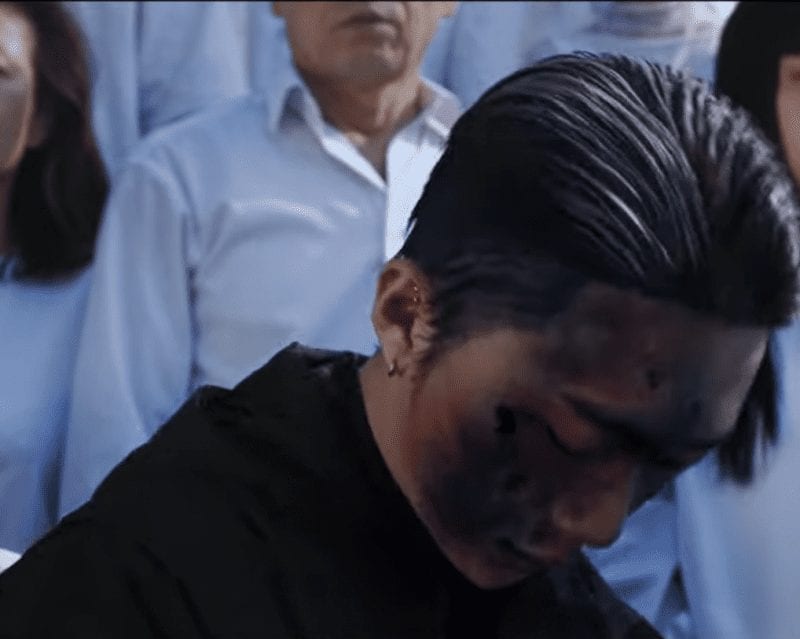
Mask of the Uncanny
While the song itself is quite straightforward, the imagery in “USED TO” is rather twisted. One might say uncanny. The Uncanny Valley theory is essentially the notion of images that seem normal until you lean in a bit closer. There’s something strangely off. The buildings. People’s faces. Toys. Something is just not right about it all. Hence the teddy bear mask. At first it’s difficult to tell exactly what Wonjae has on his face. Then you squint a bit, tilt your head to the side. There’s something oddly familiar about the shape. Teddy bears. Dissected and sewn back together in wicked fashion.
I theorize that the teddy bears covering his face suggest abuse took place as a child. The teddy bear isn’t just a form of protection (as most children are wont to use stuffed animals or toys as their protectors). Using the decimated bodies of innocent toys (again, white covering/smothering the single black spot that is Wonjae’s character) seems like he’s shredding the notion of such childish things protecting him. Destroying innocence just as his innocence was destroyed.
However, he still finds some form of safety behind these toys. Using them, like children do with toys, friends, excuses to cover beatings. He covers a face we just saw overrun with bruises and cuts. Rapping with fierce determination in a mirror. (An other distortion of reality.) Wonjae looking at a reflection of himself. The self that is hiding, that is hurting, that needs protection.
Just My Take
The video and song take me back to some of Tyler the Creator’s more viscerally personal songs. Tracks like “IFHY,” whose video also makes use of a mask of innocence. (A cartoonish smiling doll face on a young man sitting in a doll house, a fantasy.) Perhaps more sinister of a comparison, the human mask from “Who Dat Boy.” (Warning: The MV is NSFW.) Much of what made up “Flower Boy.” In fact, the scene of Wonjae sitting in a field surrounded by bees is reminiscent of the album cover for “Flower Boy.”
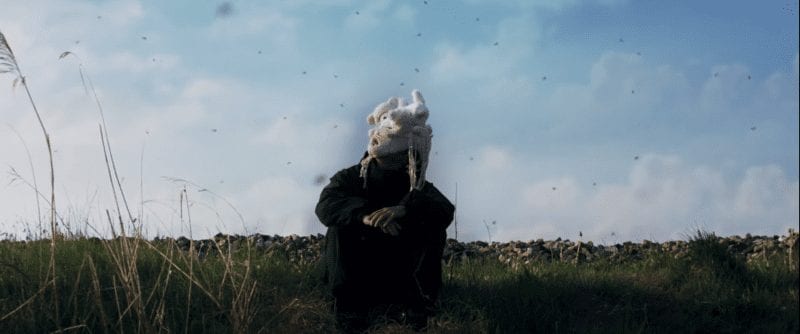
Of course, this is all speculation. I don’t know Wonjae’s story. But this video touched something primal in me. Something broken and hurt and weeping. Something that wants to comfort and be comforted. BewhY’s “GOTTASADAE” video was perhaps the most visceral of 2019 to come out of South Korea. I’m going to posit that Wonjae’s “USED TO” might fit that description for 2020. Visceral. Unsettling. Rich in meaning and open to interpretation.
Wonjae is a young man crying out for some peace. In his own way, he’s raging against the restraints of his fame. Which in and of itself is just another form of isolation. I went back and forth about writing this. While “GOTTASADAE” was intellectually fascinating, “USED TO” is just emotionally taxing. There’s so much you can take away from the video and song. So many avenues you can take with the imagery. Mine is just one. The one that most resonated with me. I’m curious to know what others think Woo wants to express here.
Follow Woo:
[icon type=”apple”] [icon type=”instagram”] [icon type=”soundcloud”] [icon type=”spotify”] [icon type=”youtube”]CODE KUNST drops fourth full-length album, “PEOPLE,” and “flower” MV
CODE KUNST has released his fourth full-length album, “PEOPLE,” and the music video of its title track “flower (Feat. Jay Park, Woo, Giriboy),” today.
Dingo X DAMOIM Part 2: “IMMA DO (Prod. NOISEMASTERMINSU)”
Dingo and DAMOIM have dropped their second single, “IMMA DO.” Produced by NOISEMASTERMINSU, it features Woo, Keem Hyo-Eun, Nucksal and Huckleberry P.

